Special Report
Climate Refugee Crises Happening Right Now (and How to Help)

Published:
Last Updated:

The total number of displaced people in the world has now surpassed an astounding 70 million people. This total includes nearly 26 million refugees who have been forced to leave their country due to fear of persecution, war, famine, flood, disease, and often a combination of these factors. There is mounting evidence that the conditions leading so many to flee their homes can be tied to one major cause: climate change.
The United Nations High Commissioner for Refugees, or UNHCR, is one of the leading bodies identifying and assisting the world’s climate refugees. The group advocates for international policy changes and provides material assistance and legal advice for those displaced by crisis. Considering the emergencies for which the UNHCR provides assistance, 24/7 Wall St. reviewed five ongoing global refugee crises today related to climate change.
When considering the groups that can be most affected by climate change, many would likely first think of rising sea levels affecting the populations of small, low-lying island nations. For example: Kiribati, the Pacific Island nation of roughly 100,000 residents, is projected to be effectively uninhabitable within decades. Even in the United States, there are a number of coastal cities that will soon be under water.
But islands and low-lying inhabited areas are far from the only places on Earth where climate change is contributing to a refugee crisis. In fact, many of the worst active refugee crises in the world today are tied to worsening climate conditions. These emergencies are not expected to occur in the next few decades — they are already happening.
On every continent, water scarcity, drought, flooding, wildfires, and more — all conditions which have been shown to be increasing in intensity and frequency as a result of climate change — are displacing residents directly and exacerbating poor conditions for those who are fleeing their homes. Here are some of the places where weather is already getting worse because of climate change.
While violent conflict, the source of a great many of the world’s refugee crises, is not directly a condition of climate change, it is clear that worsening climate conditions are often a root cause of these conflicts.
If you want to get involved assisting these refugees and those who have been displaced by climate change, there are many ways you can help, including volunteering with a nonprofit that specifically works on behalf of climate refugees. You can also make a secure donation to the UNHCR, or to the International Rescue Committee, another leading nonprofit working for the welfare and rights of refugees of all kinds.
Click here to read about the climate refugee crises happening right now (and how to help).
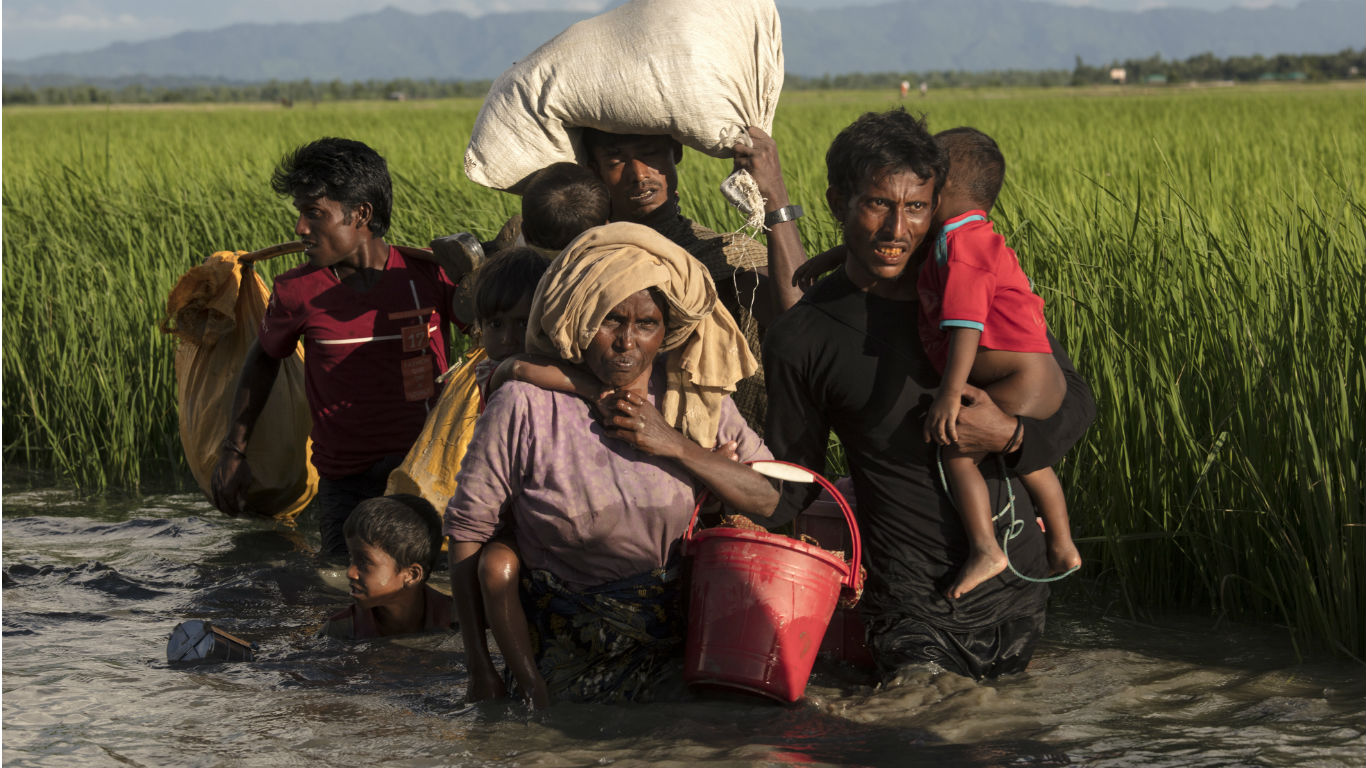
1. Myanmar
Members of the long-persecuted Rohingya Muslim minority group have often been displaced in Myanmar, but conditions caused by climate change exacerbated their circumstances and the country’s current refugee crisis. After large parts of Myanmar were devastated by flooding and landslides in 2015, hundreds of thousands fled inundated areas, including Rohingya people. In the following years, the Southeast Asian nation has undergone a political change and faced a number of health crises.
A surge of violence against the Rohingya in the summer of 2017 caused more than 700,000 to flee the country, the majority of which have gone to Bangladesh. In early July, massive flooding destroyed many of the temporary shelters of Rohingya refugees in the Cox’s Bazar settlement in Bangladesh, where over 900,000 refugees currently reside. According to the UNHCR, the vast majority of the Rohingya are women and children, and over 40% are under the age of 12.
[in-text-ad]
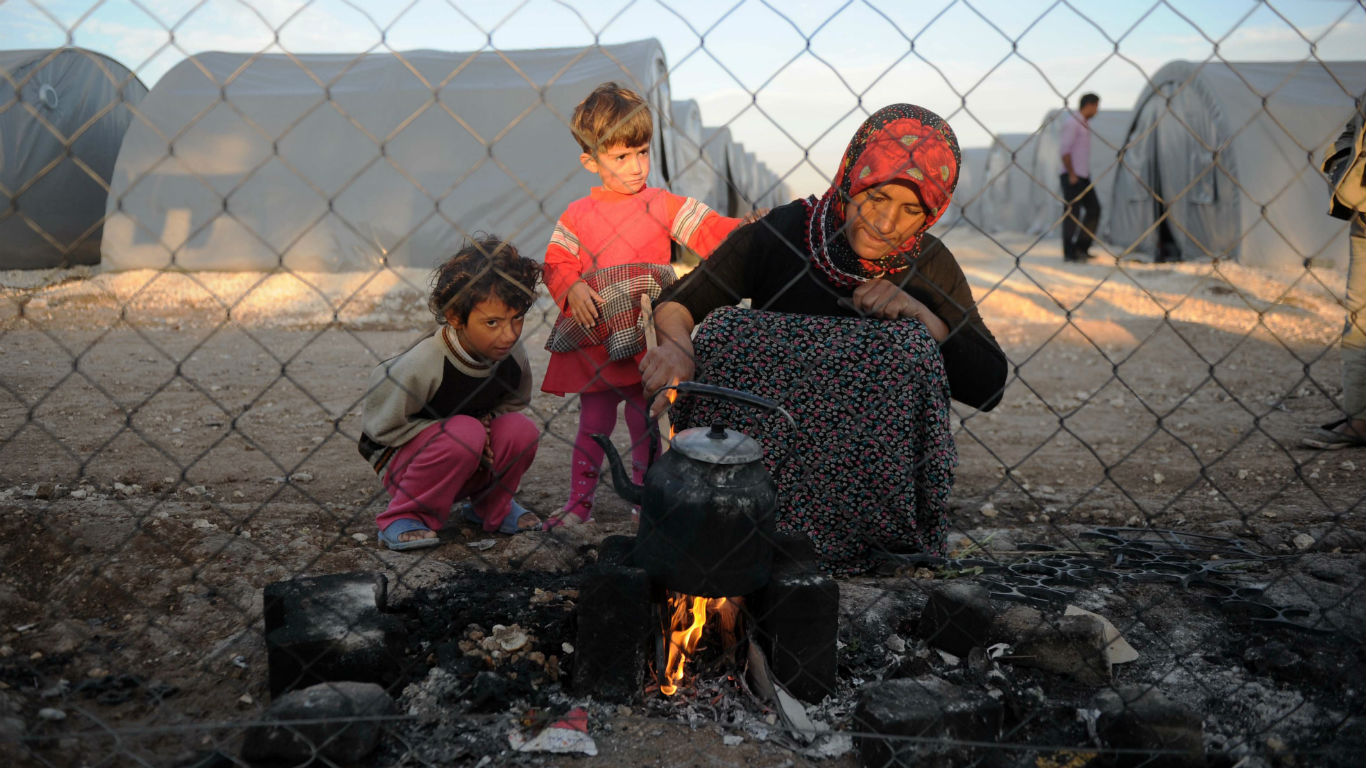
2. Syria
Civil war, not climate change, is commonly associated with the world’s worst refugee crisis. But a report published in the Proceedings of the National Academy of Sciences found that severe regional drought between 2006 and 2011 led to food shortages and illness in Syria and drove hundreds of thousands of residents to live in poor conditions on the outskirts of the country’s cities. It was these conditions that served as one of the primary triggers for the civil war that killed several hundred thousand and led to the refugee crisis. Further, the researchers concluded that climate change was a significant factor in the length and severity of the drought — the worst the country has faced in centuries — since normal variability in regional weather would not be sufficient to explain it.
There are roughly 5.6 million Syrians refugees living in neighboring countries. The majority of Syria’s refugees are in neighboring Turkey. In countries like Lebanon and Jordan, which are host to hundreds of thousands of Syrian refugees, the vast majority of Syrian refugees do not live in organized camps and face severe poverty. Overall, there are nearly 13 million forcibly displaced Syrians, the largest such population in the world.
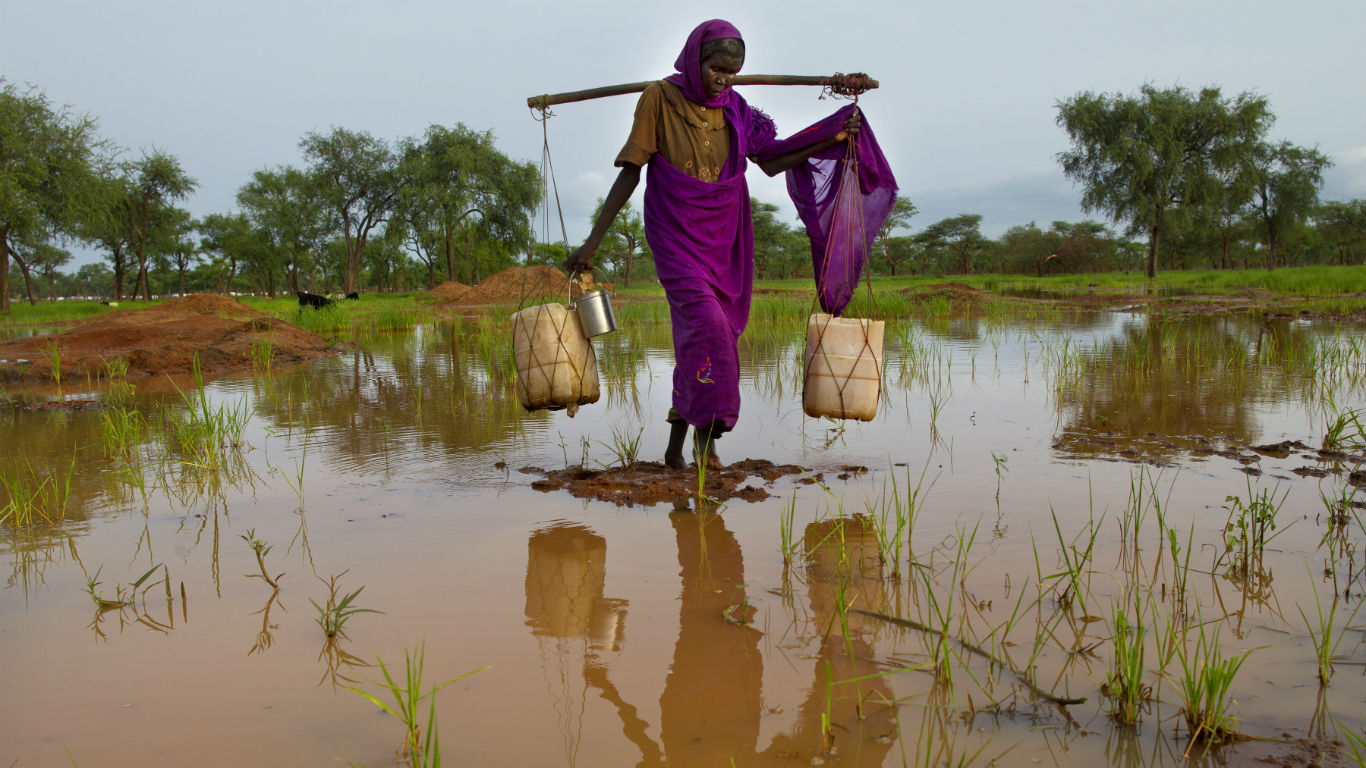
3. South Sudan
South Sudan is the third largest source of refugees in the world, after Syria and Afghanistan, according to the UNHCR. More than 2 million have fled to other countries, primarily to neighboring Sudan, Uganda, and Ethiopia, as civil war continues to ravage the nation. Close to 2 million more have been displaced to other places within the country’s borders since the conflict began in 2013.
According to the UNHCR, flooding, food shortages, and disease have worsened conditions for South Sudanese refugees, many of who remain homeless. The majority of the country’s refugees are women and children. A report published by the United Nations Environment Program in 2018 found that worsening drought and flooding conditions have directly led to competition for resources and worsened the ongoing conflict. Gary Lewis, Director of UN Environment’s Policy and Program Division, said “The country’s fragile natural environment has suffered enormously; fighting over natural resources together with the impacts of climate change are factors in driving this vicious cycle.”
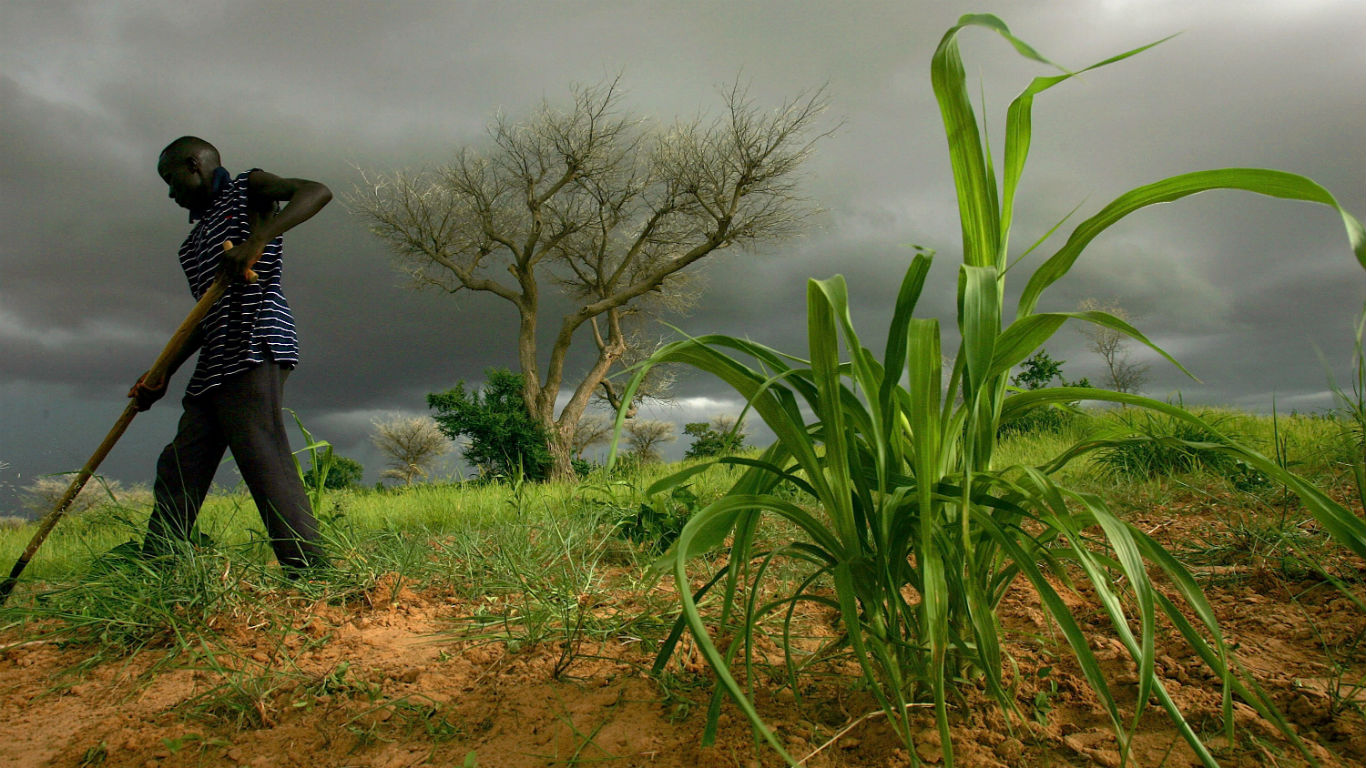
4. Nigeria
Over the past 10 years, attempts by jihadist group Boko Haram to rebel against the Nigerian government and establish an Islamic state in the region have led to thousands of deaths and the displacement of over 2.7 million people in the Lake Chad Basin. The crisis is exacerbated by climate change, as rising temperatures and reduced rainfall have rendered more land infertile and intensified the fight over Nigeria’s dwindling farmland.
According to the Nigerian Meteorological Agency, Nigeria loses an average of 867,337 acres of land, or 0.4% of the country’s landmass, to drought and desertification every year. The drying of land and threat of Boko Haram in the northeast have pushed Nigeria’s mostly-Muslim, Fulani cattle herders further south, sparking deadly ethnic conflicts with Christian farmers in the southern half of the country and reducing the available supply of food throughout the region. According to the UNHCR, some 3.5 million people in the Lake Chad Basin region are food insecure.
[in-text-ad-2]
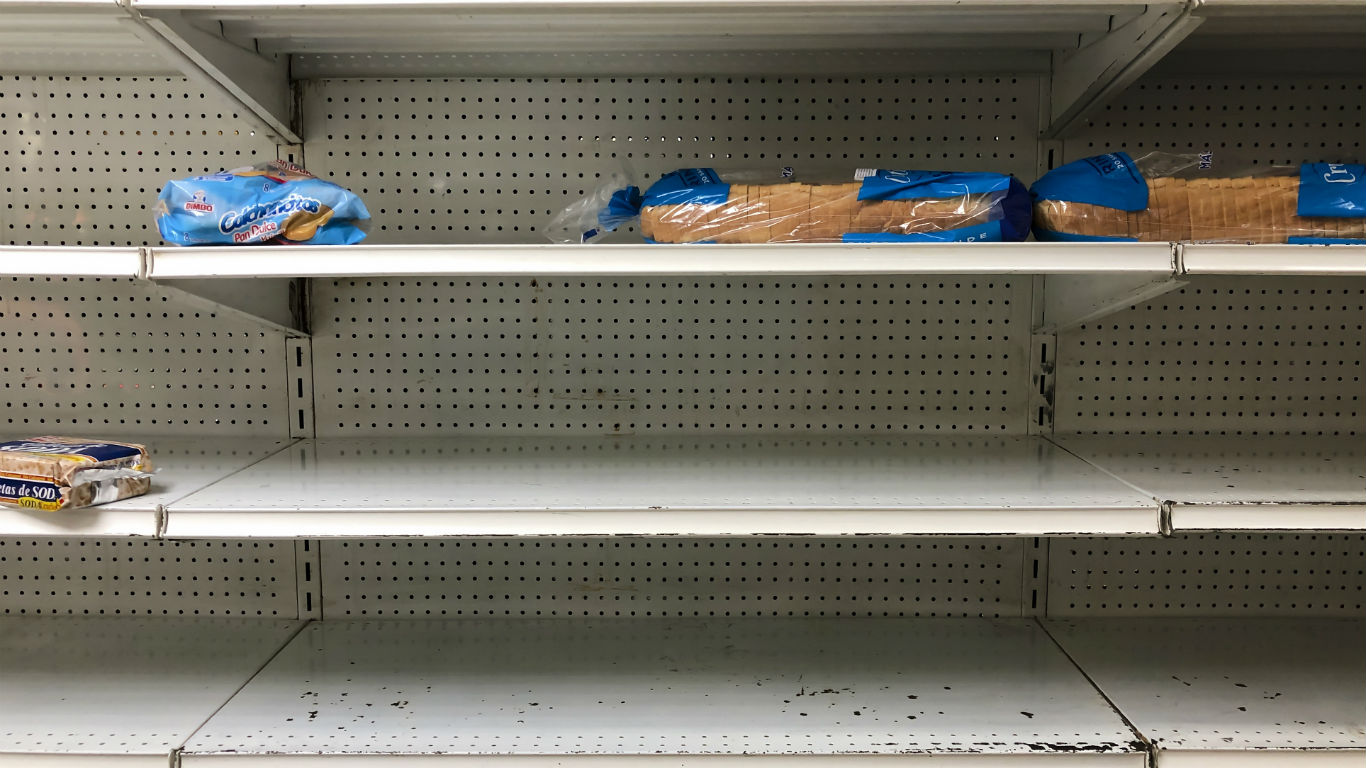
5. Venezuela
Venezuela is currently in the midst of a political upheaval, economic collapse, and severe drought that has led to a national humanitarian crisis and the outbound migration of more than 4 million refugees. The struggle for power by two rival politicians as well as hyperinflation — prices in Venezuela were doubling every 19 days on average by the end of 2018 — have contributed to instability in the country and caused mass shortages of basic necessities such as food, water, and power. In a 2017 survey, 60% of Venezuelans said they had gone to bed hungry because they could not afford food, and 64% said they had lost weight — 25 pounds in a year on average.
The situation is made worse by climate change. Venezuela received 50%-65% less rainfall than normal from 2013 to 2016, leading to widespread water shortages. In a country heavily reliant on hydropower — 64% of Venezuela’s electricity is from hydroelectric sources, compared to the 16% global average — the drought has not only led to food shortages but also to power shortages and frequent blackouts.
Start by taking a quick retirement quiz from SmartAsset that will match you with up to 3 financial advisors that serve your area and beyond in 5 minutes, or less.
Each advisor has been vetted by SmartAsset and is held to a fiduciary standard to act in your best interests.
Here’s how it works:
1. Answer SmartAsset advisor match quiz
2. Review your pre-screened matches at your leisure. Check out the advisors’ profiles.
3. Speak with advisors at no cost to you. Have an introductory call on the phone or introduction in person and choose whom to work with in the future
Thank you for reading! Have some feedback for us?
Contact the 24/7 Wall St. editorial team.